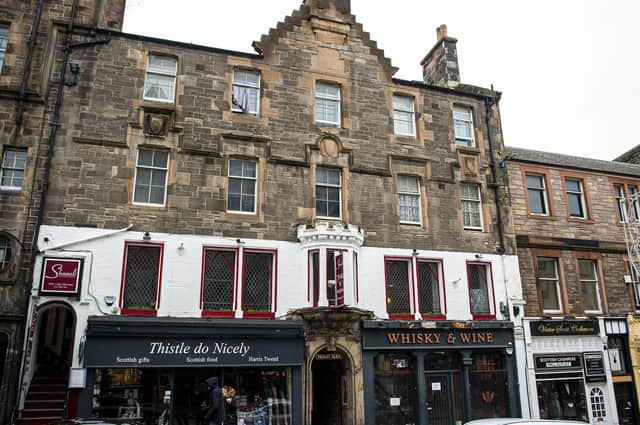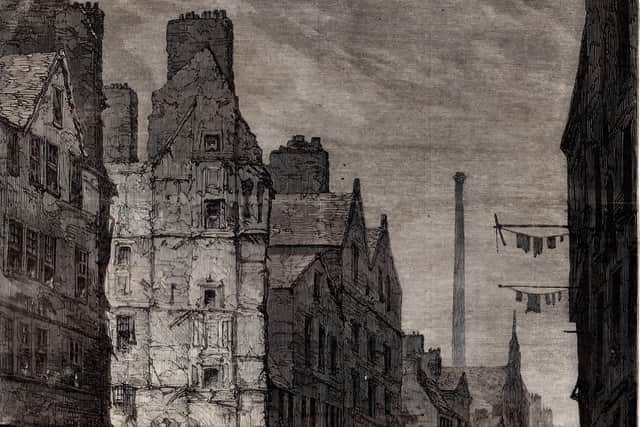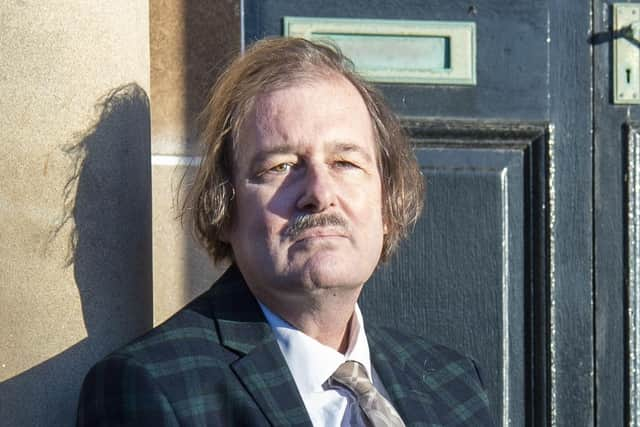Part 2: The identity of Edinburgh’s Heave awa' Lad is revealed


The last survivor found was a small black-and-white dog, discovered in a state of advanced exhaustion; after being nursed back to health, there were plans that the animal was to be sold as a curiosity, for the benefit of the Relief Fund. A birdcage hung on the wall of the collapsed house, with a living linnet found inside, is today at the Museum of Edinburgh.
There was much debate who was to blame. The obvious reason for the collapse was that the building, three centuries old, had not been properly maintained, leading to severe rot in the timber structure. The day before the accident, the grocer Mr Cairns had noticed that the plaster had scaled off the tops of some pillars that supported the roof of his shop, and that there was a crack in the arch of the adjoining close. He called in the builder Mr Watherston who investigated the situation and found nothing seriously wrong, promising to return on Monday with a party of workmen.
Advertisement
Hide AdAdvertisement
Hide AdThere was consternation in the Old Town now that one of the key principles of the greedy slum lords exploiting the poor, namely that a house should look after itself, had proven to be fallacious, with disastrous effect. The Lord Provost and the Town Council were also concerned about the state of the Old Town houses. In 1862, Dr Henry Littlejohn was appointed Edinburgh’s first Medical Officer of Health, three years later, he published a detailed report about the often appalling living conditions in the Old Town, leading to several slum clearances being carried out, with a number of derelict houses being pulled down, to be replaced with the solid Victorian housing that can still be seen today.


Students of Edinburgh mythology in general must ask themselves whether the tale of the Heave awa’ Boy was mentioned in the early news reports, or if it was just a dubious later invention. The files of the Scotsman answers this query. As quoted from the newspaper of November 25, the day after the house collapse:
'At an early hour, while the work of clearing away the rubbish was proceeding, one of the detachments of firemen discovered a foot protruding amid the debris. The men set vigorously to work around the spot, and soon ascertained that a boy was buried there. But the unfortunate lad was so closely wedged between the rubbish and a joisting, that he could not be got out until the beam was cut in two. During the process of sawing through the beam, the boy was heard repeatedly to say, "Heave away, men; I’m no dead yet," and on his ultimately being extricated, happily not much injured, he immediately called for a drink of water. Considering his extremely critical position, the patience and firmness of this lad was truly wonderful.”
Thus several mainstays of the old story, including the nature of the brave boy’s outcry, appear to be the truth. Annoyingly, the original Scotsman account does not name the Heave awa’ Boy, nor does any other newspaper from November 1861. Lists of the dead reveal that among the inhabitants of the fourth flat, William M’Luskie and his wife had both expired in the catastrophe, as had their servant Bridget M’Kinnon; the lodger Agnes Gardener was missing presumed dead, but old Mrs M’Luskie and the 12-year-old lad Joseph McIvor were both in hospital with minor injuries.
Advertisement
Hide AdAdvertisement
Hide AdJoseph was dismissed from the Royal Infirmary on November 30, having recovered from bruising to the head and elbow; truly a remarkable escape after falling down four stories before having an entire house come down on top of you. Although several other adolescents were also saved with modest injuries, he is the prime candidate for being the Heave awa’ Boy, particularly if a cutting from the Scotsman of June 14, 1862 is considered:


'It is intended to erect on the site of the tenement which fell in the High Street in November last, and by which 35 people lost their lives, a tenement of four stories above the street, consisting of shops, warehouses, and dwelling-houses, the design being in the old Scotch domestic style.
‘The flat immediately above the shops is to be ornamented by an oriel window in the centre, which is intended as a memorial of the rescue of the boy M’Iver who was buried among the debris, and who, on recognising signs of the firemen’s approach to his deliverance, exclaimed ‘Heave away, boys, I’m no’ deid yet.’ At the request of the proprietor of this flat, a bust of this boy would be introduced on the keystone of the arch of the close, and underneath there will be a scroll bearing the above exclamation.'
Thus if the Scotsman was right back in June 1862, the Heave awa’ Boy was the 12-year-old Joseph McIvor.
Advertisement
Hide AdAdvertisement
Hide AdAnother newspaper article, in the Caledonian Mercury of June 1862, adds that young McIvor was in comfortable circumstances at the time, and that his photograph had been taken to enable John Rhind, the sculptor of the bust, to provide a good likeness. The inscription on the ornamental stone was modified for the benefit of the tourists: ‘no deid’ was anglicised to ‘not dead’ and ‘lads’ became ‘chaps’.
A sturdily built structure, by the architect Robert Paterson, the Heave awa’ Hoose has stood in the High Street ever since. The grocer Mr Cairns, whose old shop had been entirely flattened in the house collapse, took one of the ground floor shops, while a photograph shows that in Edwardian times, one of the shops was the Heave Awa’ Restaurant.
Tomorrow: A second Heave awa’ Lad makes himself known
Jan Bondeson is the author of Murder Houses of Edinburgh, published by Troubador, priced £12.99, from https://www.troubador.co.uk/bookshop/history-politics-society/murder-houses-of-edinburgh/
A message from the Editor:
Thank you for reading this article. We're more reliant on your support than ever as the shift in consumer habits brought about by coronavirus impacts our advertisers.
If you haven't already, please consider supporting our trusted, fact-checked journalism by taking out a digital subscription
Comment Guidelines
National World encourages reader discussion on our stories. User feedback, insights and back-and-forth exchanges add a rich layer of context to reporting. Please review our Community Guidelines before commenting.